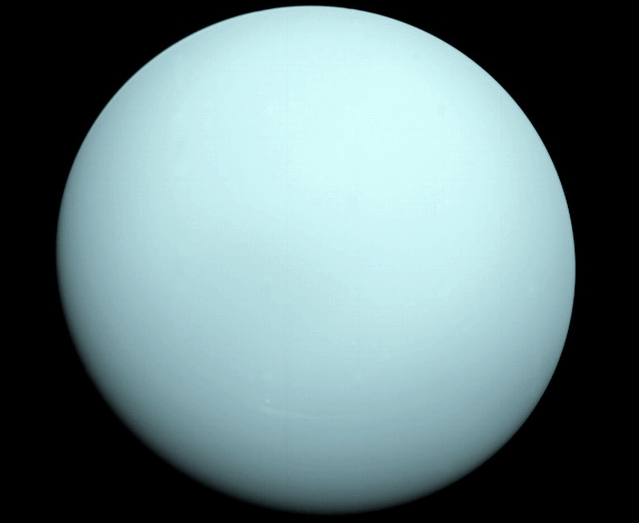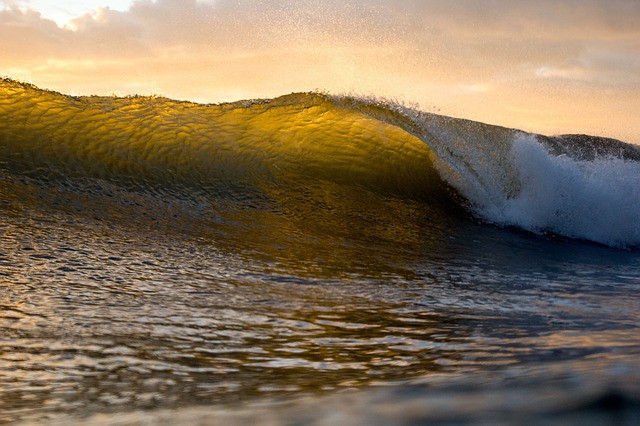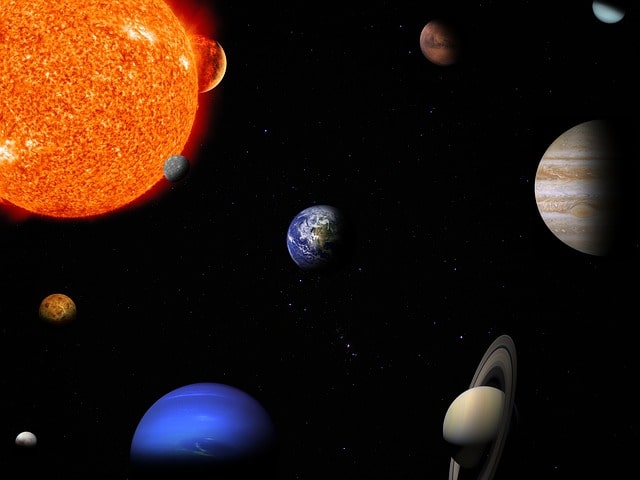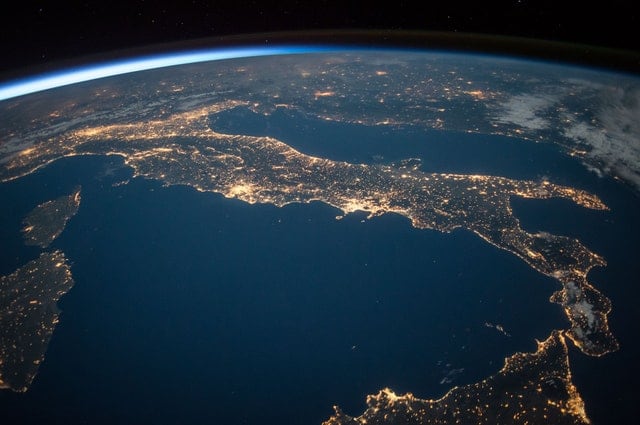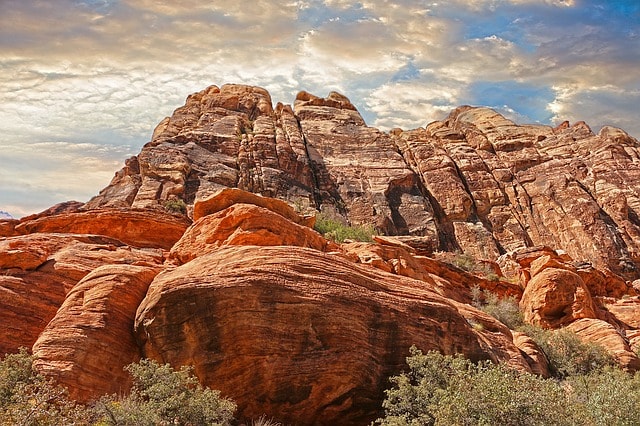What are the 9 Planets of the Solar System?

Almost all of us have looked up into the sky and wondered what is there. Well, there are lots of fascinating objects revolving out of space. Humans have left the earth in space ships to explore the solar system that surrounds it. It’s known as the solar system since everything in it revolves around the Sun and solar means the Sun.
Eight known planets, the moon, as well as comets, asteroids and other space objects, revolve around the sun. The Sun is the largest object in the solar system. In fact, it accounts for 99% of the solar systems’ mass. Astronomers estimate that the solar system is more than 4.5 billion years old. Here is a rundown on the 9 planets of the solar system:
1. Mercury
Mercury is the smallest planet in the solar system, approximately 3000 miles (4850 km) in diameter, hardly larger than the moon. Despite being the smallest, it’s extremely dense. In fact, it’s the second densest planet after Earth. It’s also the closest planet to the sun, making it dangerous to explore. Mercury is 48 million miles from the earth.
Since it’s the nearest planet to the sun, surface temperatures can go up to a scorching 800 degrees Fahrenheit to a freezing -300 degrees below zero. Mercury orbits the sun every 88 days, faster than any planet, by far. It’s characterized by short year. Despite its short year, a single day on Mercury is equivalent to about 59 Earth days. Mercury is thought to be more than two-thirds metallic and a third silicon or rock.
2. Venus
Venus is the second planet from the sun, and close to the earth, which is why it’s often referred to as our sister planet. It’s similar size to the Earth, about 7300 miles (12,000 kilometers). It’s nicknamed ‘’the morning star,” and thought to be the most inhabitable planet. Surface temperatures of Venus approach 900 degrees Fahrenheit, hot enough to melt the surface of the earth. Venus has a characteristic thick atmosphere, composed mainly of sulphuric acid and carbon dioxide.
Humans could not breathe in Venus since the atmosphere would be severely toxic. In fact, Venus’ atmosphere has more acid per cubic centimeters than a car battery. This atmosphere is the reason why Venus appears brownish-yellow. Venus rotates relatively slowly. It takes 243 days to make a complete turn. Mercury and Venus are the only planets that do not have moons.
3. Earth
Earth is a unique plant in the entire solar system because it teems with life, including millions of aquatic and terrestrial animal and plant species. It has active plate movement and humans also live on this planet. Earth’s core is almost entirely composed of iron. The inner core is solid, while the outer core is liquid.
The next layer is called the mantle and is made up of rock, mostly viscous or semi-liquid state. The surface is formed of a thin rocky crust. Earth is the 5th largest planet in the solar system (12,000 kilometers in diameter) and is thought to be 4.6 billion years old. The earth revolves around its axis every 24 hours and orbits the sun every 365 days (a year). The earth consists of one moon.
4. Mars
It often called the red planet and nicknamed Roman god of war. Mars is a little bigger than the earth (about 6,790 kilometers in diameter). It has almost similar characteristics to earth such as mountain ranges, rolling plains, gigantic canyons, and volcanoes.
Mars takes 687 days to orbit once around the sun, and its rotation speed is equal to the earth’s (24.6hrs). The surface is mostly covered by iron-rich volcanic rock. The rock is sprinkled with iron oxide, which gives the planet its characteristic red tint. Mars has a relatively thin atmosphere, and consists of two small moons.
5. Jupiter
Jupiter is the largest of all the planets in the solar systems (142,980 kilometers in diameter) and more than 11 times wider than Planet Earth. Jupiter rotates around the sun once each 12 years. Despite its sheer size, Jupiter rotates on its axis pretty fast (in 9hrs and 19 min). Jupiter is made up of gas and liquid, and has no solid. It’s 90% hydrogen and 10% helium, as well as traces of methane, water, and ammonia. This means that if you were to land on the surface, you would sink into it.
Theoretical evidence stipulates that Jupiter‘s core is made up of metallic hydrogen and rock. The exterior gaseous part is split into bands of brown, red, yellow and white clouds. Jupiter consists of four rings mainly made up of dust. The surface also experiences oval-shaped storms. As of 2016, Jupiter encompasses 67 known satellites, plus the 4 large Galilean moons (Io, Europa, Callisto, and Ganymede), as wells as numerous small ones, which remain unnamed.
6. Saturn
Saturn is the 6th planet away from the sun. It’s one of the largest and brightest planets, nine times the size of the earth (120,536 kilometers), and orbited by numerous objects. Saturn is recognizable by its system of three rings. It orbits the sun in 12 years and rotates slightly more than 10 hours. Saturn has a relatively small and solid dense core, composed mainly of ice and rock. It’s surrounded by a layer of liquid metallic hydrogen. The exterior layer is composed of helium, molecular hydrogen and traces of water, methane, and ammonia.
As opposed to other planets, Saturn has no definable surface. As an alternative, there is a slow transition from a gaseous atmosphere to liquid interiors. Its core is extremely hot (21, 00 degrees Fahrenheit). In fact, Saturn is thought to radiate 2.5 times more energy than it receives from the sun. Its surface appears branded, and consists of a brown-yellow, butterscotch color. Saturn consists of 62 moons as of 2016 statistics. It’s nicknamed the Roman god of agriculture.
7. Uranus
Uranus is the 7th planet from the sun. It’s the third-largest planet in the solar system, 4.4 times the size of planet earth (51,118 kilometers). Uranus orbits the sun relatively slowly. It takes 84 years to complete a single orbit, rotating on its axis much faster than the earth (17 hours). Uranus can be seen with the naked eye and has a characteristic blue color. Like Jupiter and Saturn, Uranus has no solid outer surface, which means the entire surface is made up of gases, with a fairly uniform blue-green color.
However, the core is solid and rocky, and since it’s too far from the sun, the core is surrounded by a mantle of ice, which is why this planet is referred to as an ice triad. As of 2016, Uranus has 27 moons and is wrapped around by a system of nine rings. Uranium is nicknamed “grandfather of Jupiter.”
8. Neptune
Neptune is a little smaller than Uranus, and 17 times bigger than earth. It has a measurement of 49, 500 kilometers in diameter. Neptune is the 8th and furthest planet from the sun. It orbits the sun once each 165 years. It has almost similar structure and composition as Neptune, as its outer surface appears blue, and characterized by large dark blue storm systems. A system of five rings surrounds Neptune and consists of 14 moons. It’s nicknamed the Roman god of the ocean.
9. Pluto
Pluto is found 3.7 billion miles from the sun. It’s half the size of the earth’s moon, which is why it was renamed dwarf planet. Pluto is composed of chiefly rock and ice. The surface is made up of almost completely frozen methane, nitrogen, and carbon monoxide. It orbits the sun in 28 years and rotates in a duration of 6.4 days. It’s composed of one large moon and nicknamed the Roman god of outer darkness.


